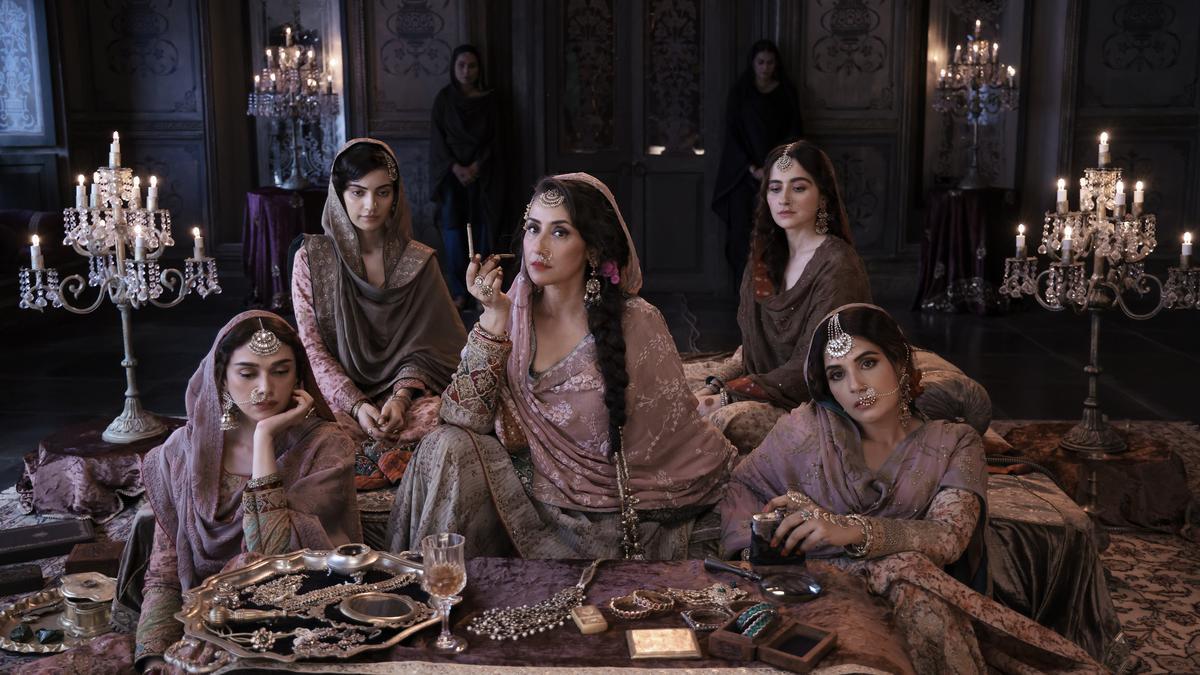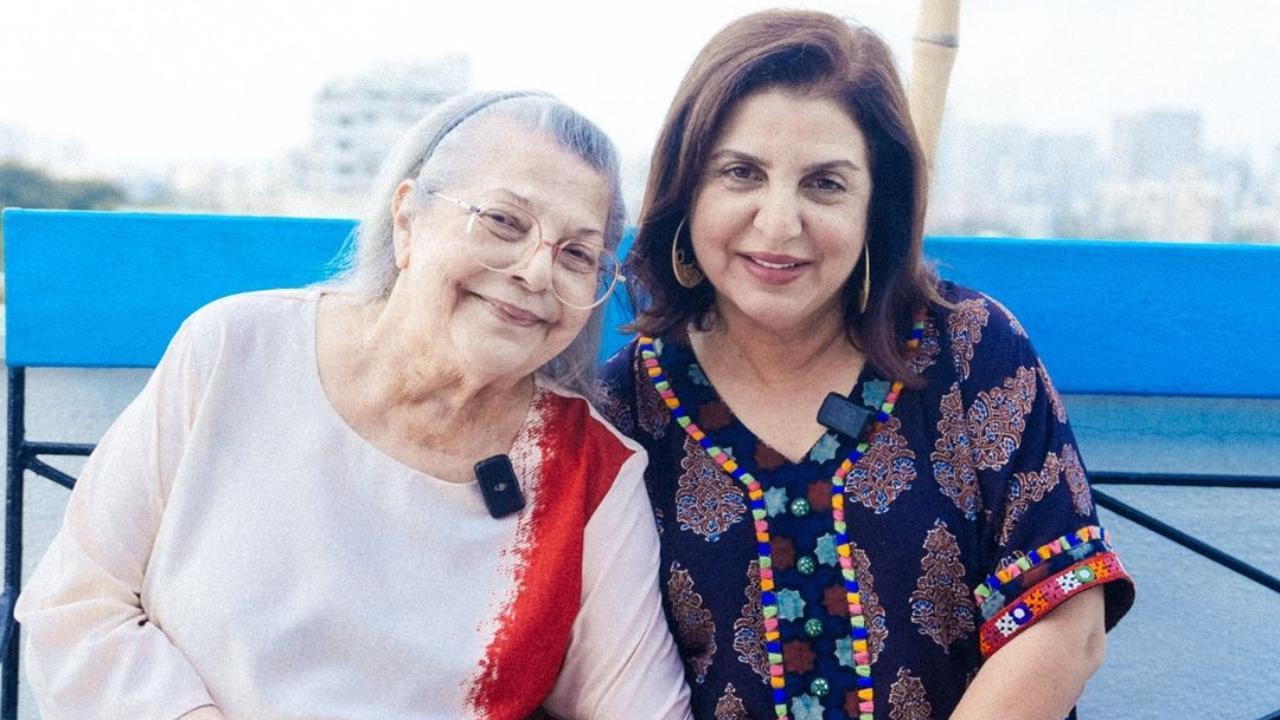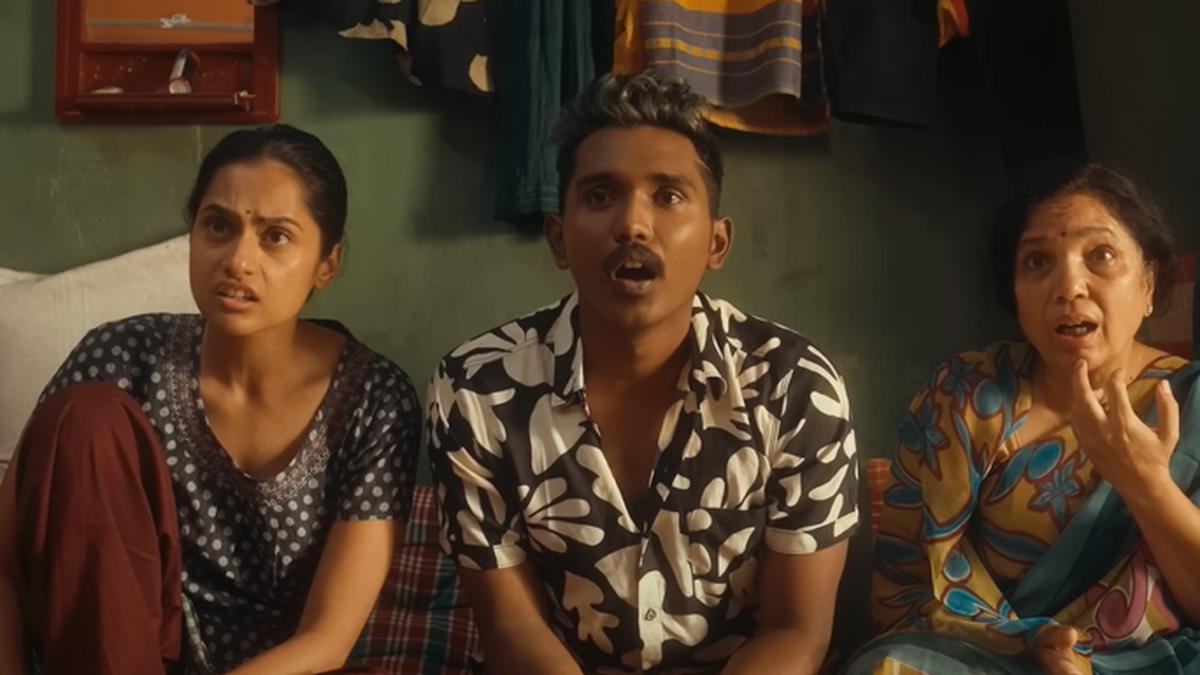
Heeramandi, as envisioned by filmmaker Sanjay Leela Bhansali in his inaugural foray into streaming series, thrives on a lavish otherworldliness that reigns from opening to closing credits. The series exudes an inescapable nostalgia for the splendor of the big screen—a medium for which Bhansali’s love is well-documented—despite its debut on the far smaller screens of our personal devices. The saga commences in the heart of Lahore, where we are introduced to Mallikajaan, an embattled courtesan deeply marred by misfortune, as she mourns before a hearth, casting her wealth away, transforming glimmering jewelry into mere ash. Her mansion, bathed in spectral gloom, contrasts starkly with the vibrant celebration in the courtyard across from her—the jubilation hidden until the critical moment a curtain is drawn.
The series is awash with poetic muse, embracing the artistic ethos of pre-Independence India. Bhansali brings his admiration for Sufi and Urdu masters to the forefront. “Sakal Ban,” a melody that heralds the arrival of spring, traces its roots to a verse by Amir Khusrow, and the narrative is sprinkled with references to literary icons such as Ghalib and Mir. In the center of this lyrical cosmos stands the character Alamzeb, essayed by Sharmin Segal. As an aspiring poetess, she becomes the custodian of prose and passion—promising her betrothed not only her love but a daily diet of couplets and poems—an offer extended metaphorically to the audience itself.
The storyline unfurls within the opulent confines of Shahi Mahal, an elite brothel in Lahore’s pleasure district, Heera Mandi. At its helm is Mallikajaan, portrayed with emotive depth by Manisha Koirala, who supports her daughters—the poetic Alamzeb and the rebellious songstress cum spy, Bibbo (Aditi Rao Hydari). Set against the 1940s pre-independence milieu, the narrative entwines the personal plights and political turmoil with the undertones of revolution vibrating through the corridors of power.
A tide of dramatic flashbacks reveals sordid secrets and propels us into a complex web of power plays, notably involving Fareedan (Sonakshi Sinha), a courtesan bent on disrupting the established order within Heera Mandi’s walls. Fareedan’s insidious machinations, a simmering romance between Alamzeb and the maverick young nawab Tajdar, and revolutionary fervor are the pivots upon which the plot twists and turns. Police superintendent Cartwright, portrayed by Jason Shah, adds another layer of tension, probing for buried transgressions.
Bhansali, along with the series’ writers, meticulously weaves these narrative strands, although the rich tapestry of visuals and sonorous background occasionally falls victim to pacing issues, stretching the viewer’s patience. Moreover, the volatile political landscape of the era is only brushed upon, leaving out significant historical details such as the rise of the Muslim League and the call for a separate Pakistani state.
Heeramandi echoes the real society of the same name rooted in Mughal Lahore, renowned for courtesans who wielded wealth and wielded clout. The series pays homage to these influentials yet occasionally succumbs to an emotional excess that forces uneasy parallels between the plight of the characters and the subjugated state of India itself. The show’s creators inflame the narrative with allusions to colonial “divide and rule” tactics and gilded cages, both literal and figurative.
In a more contemporary comparison, Heeramandi mirrors Bhansali’s 2022 movie ‘Gangubai Kathiawadi,’ addressing the stigma of sex work while revering the courtesans’ enduring contributions to culture and society. Mallikajaan, with a steadfast defiance, champions the higher social standing of kothas – as centers of artistic expression and sophistication – even when entangled in her darkest hour.
On technical fronts, the series wins hands down. Orchestrated on a lavish budget, it boasts breathtaking visuals afforded by the combined genius of cinematographers such as Sudeep Chatterjee and Mahesh Limaye. Bhansali’s gracious nods to film classics like ‘Mughal-E-Azam’ and ‘Pakeezah’ ensure that Heeramandi’s aesthetic is not only authentic but steeped in cinema lore.
While seasoned actors like Manisha Koirala and Fardeen Khan deliver compelling performances, the series sometimes staggers under less seasoned leads, leaving one wishing for the grounded presence of more experienced talents. The finale, however, strides confidently into Bhansali’s distinctive gothic abstraction—a shocking reversal of the finale of his earlier ‘Padmaavat’, with the women of Heera Mandi transformed from passive participants into emboldened agents of change.
Heeramandi is more than a period drama; it is a visual composition, a hymn to the bygone era of cultured courtesans where each frame is a canvas and every movement a dance. Audiences can embark upon this mesmerizing journey into Lahore’s storied past from the comfort of their homes, as the series currently streams on Netflix.










